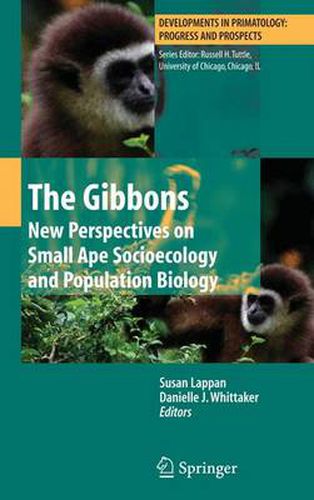Readings Newsletter
Become a Readings Member to make your shopping experience even easier.
Sign in or sign up for free!
You’re not far away from qualifying for FREE standard shipping within Australia
You’ve qualified for FREE standard shipping within Australia
The cart is loading…






This title is printed to order. This book may have been self-published. If so, we cannot guarantee the quality of the content. In the main most books will have gone through the editing process however some may not. We therefore suggest that you be aware of this before ordering this book. If in doubt check either the author or publisher’s details as we are unable to accept any returns unless they are faulty. Please contact us if you have any questions.
It is a great honor to be asked to introduce this exciting new volume, having been heavily involved in the first comprehensive synthesis in the early 1980s. Gibbons are the most enthralling of primates. On the one hand, they are the most appealing animals, with their upright posture and body shape, facial markings, dramatic arm-swinging locomotion and suspensory postures, and devastating duets; on the other hand, the small apes are the most diverse, hence biologically valuable and informative, of our closest relatives. It is hard for me to believe that it is 40 years to the month since I first set foot on the Malay Peninsula to start my doctoral study of the siamang. I am very proud to have followed in the footsteps of the great pioneer of primate field study, Clarence Ray Carpenter (CR or Ray, who I was fortunate to meet twice, in Pennsylvania and in Zurich), first in Central America (in 1967) and then in Southeast Asia. It is 75 years since he studied howler monkeys on Barro Colorado Island in the Panama Canal Zone. It is 70 years since he studied the white-handed gibbon in Thailand.
$9.00 standard shipping within Australia
FREE standard shipping within Australia for orders over $100.00
Express & International shipping calculated at checkout
This title is printed to order. This book may have been self-published. If so, we cannot guarantee the quality of the content. In the main most books will have gone through the editing process however some may not. We therefore suggest that you be aware of this before ordering this book. If in doubt check either the author or publisher’s details as we are unable to accept any returns unless they are faulty. Please contact us if you have any questions.
It is a great honor to be asked to introduce this exciting new volume, having been heavily involved in the first comprehensive synthesis in the early 1980s. Gibbons are the most enthralling of primates. On the one hand, they are the most appealing animals, with their upright posture and body shape, facial markings, dramatic arm-swinging locomotion and suspensory postures, and devastating duets; on the other hand, the small apes are the most diverse, hence biologically valuable and informative, of our closest relatives. It is hard for me to believe that it is 40 years to the month since I first set foot on the Malay Peninsula to start my doctoral study of the siamang. I am very proud to have followed in the footsteps of the great pioneer of primate field study, Clarence Ray Carpenter (CR or Ray, who I was fortunate to meet twice, in Pennsylvania and in Zurich), first in Central America (in 1967) and then in Southeast Asia. It is 75 years since he studied howler monkeys on Barro Colorado Island in the Panama Canal Zone. It is 70 years since he studied the white-handed gibbon in Thailand.